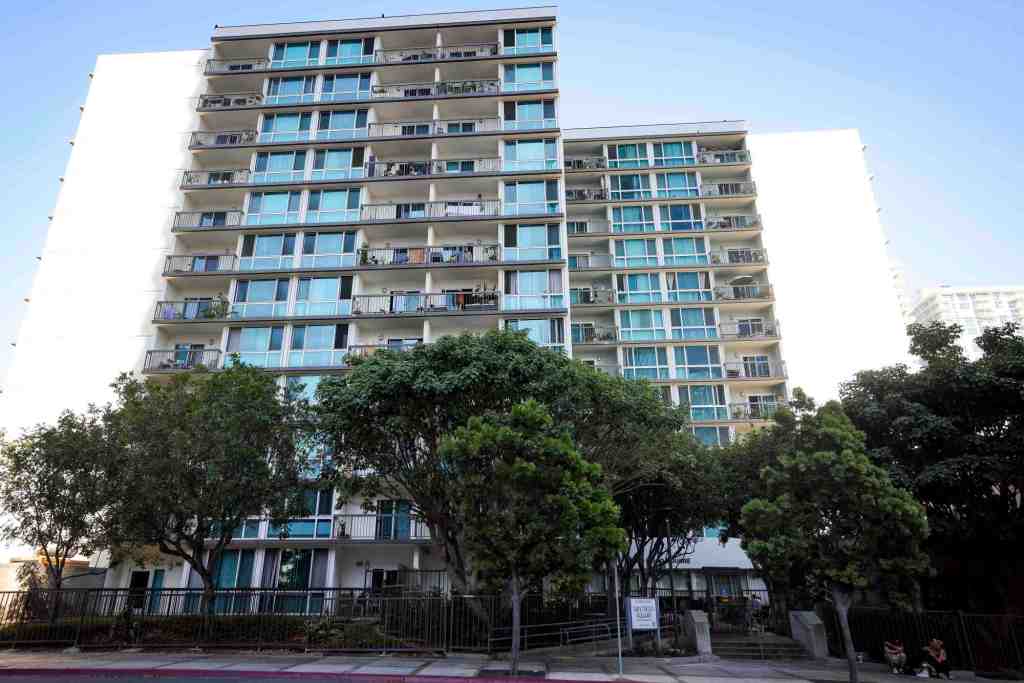San Diego is taking a major step toward preserving scarce affordable housing by establishing a long-awaited fund that will buy apartment complexes in danger of being sold to developers.
The fund, which the city will launch with $5 million, comes six months after the city approved a law requiring owners of rent-restricted complexes to notify the city before selling.
City officials say the law and the new fund will work together to help preserve low-rent housing, which is considered crucial to reducing local homelessness.
Councilmember Kent Lee said San Diego’s efforts to solve the housing crisis have focused too much on spurring more production and not enough on preserving the existing stock of more affordable homes.
A city analysis determined that 35% of all new production will simply replace lost cheaper housing if the city doesn’t intervene to begin preserving them.
“Increasing the supply of housing is only one piece of the puzzle,” Lee said. “The preservation of existing affordable housing is equally critical for us to address this housing crisis.”
The city is focused on both subsidized and rent-restricted housing and something officials call naturally occurring affordable housing — older housing with limited amenities that rent for lower than market rate even without subsidies.
San Diego’s supply of so-called naturally occurring affordable housing has dropped sharply from 90,000 homes in 2000 to 30,000 in 2020, according to data compiled by the San Diego Housing Federation.
City officials say they are particularly focused on 4,200 subsidized units and 9,250 naturally-occurring units that are vulnerable to getting replaced by market-rate units by 2040.
The rent restrictions on nearly 600 of the subsidized units are due to expire in the next three years, officials said.
The new housing preservation fund, which the City Council’s Land Use and Housing Committee approved unanimously last week, will focus initially on naturally occurring affordable housing.
The city’s Housing Commission, which is overseeing the fund, said that approach makes sense because it avoids the time-consuming process of applying for tax credits.
The commission plans to target “stable, revenue-generating, multifamily properties in high-opportunity areas — such as those near transit, schools, and employment centers — that do not yet require major rehabilitation.”
Those units make sense, it says, because the commission wants to make one successful property purchase to help lure potential partners for future purchases, such as banks and other philanthropic organizations.
The $5 million will serve as a sort of down payment, and the commission will use tax-exempt bonds to finance the rest of the purchase.
Rents from the property will pay back the bonds and provide additional money to create a revolving fund, said Colin Miller, the commission’s senior vice president for real estate development.
That strategy, which the commission describes as innovative, is a first for the city of San Diego and the region.
Once the city shows its model can work with that first purchase, Miller said the commission expects partners to be willing to participate in future purchases of both naturally-occurring and subsidized affordable housing.
The property the commission buys will almost immediately become deed-restricted, meaning the homes will all get locked-in rents based on the incomes of the tenants.
Councilmember Vivian Moreno, who spearheaded city efforts to preserve affordable housing years ago, said she believes the commission’s revolving fund idea has great potential.
“The sky’s the limit with this,” she said.
The $5 million comes from the city’s Neighborhood Enhancement Fee Fund, which collects money from developers that take advantage of the city’s Complete Communities housing incentive.
That incentive lets developers build projects that have many more homes than the underlying zoning would typically allow if those developers agree to add amenities like parks.
But developers can pay into the Neighborhood Enhancement Fee Fund instead of providing amenities. Since that fund was created in 2020, developers have contributed more than $20 million — $13 million of it devoted to preservation of affordable housing.
The city will use $5 million of that money to launch the housing preservation fund.
Councilmember Raul Campillo praised the city’s plan, stressing that costs to preserve affordable units are about $400,000 per unit while costs to subsidize new affordable units range between $500,000 and $900,000.
“It’s clear that preserving these units, rather than spending this money to construct new units, is the right way to move forward,” Campillo said.
